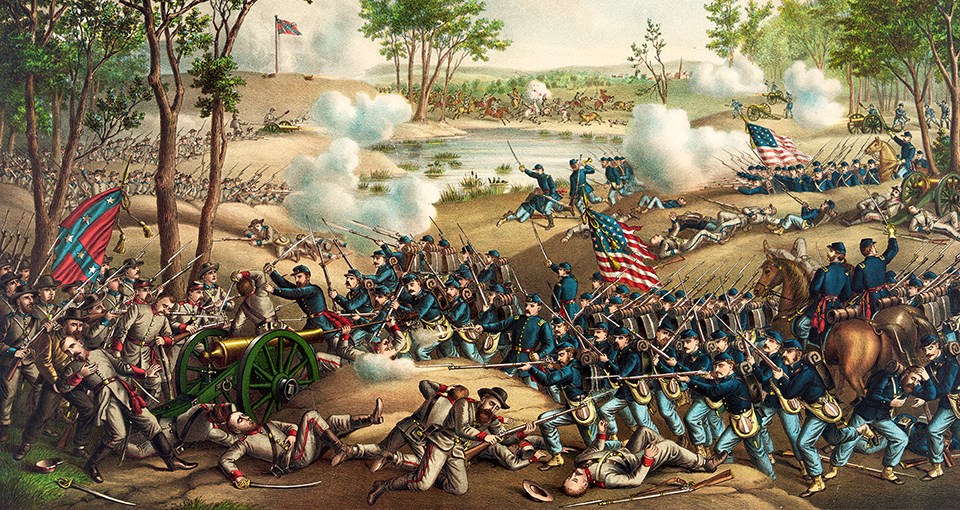Last updated: April 24, 2020
Article
Cold Harbor, Grant's Greatest Regret

Library of Congress
Each time General Grant tried to get around Lee’s right flank, Lee was already anticipating his every move. Lee’s army stopped Grant at Spotsylvania Court House, North Anna River, and Totopotomoy Creek before the two opponents dug in around an area known as Cold Harbor. The phrase “Cold Harbor” came from staying at a tavern that had a place for travelers to sleep, but no food was served at the tavern. Lee’s men had built entrenchments from Totopotomoy Creek, Lee’s left flank, all the way southward down to the Chickahominy River, which was a distance of about six or seven miles. Grant’s army tested Lee’s defenses on June 1st and 2nd with little success, but a major attack was planned for the morning of June 3, 1864. The attack would try to overrun Lee’s defenses, and push all the way to Richmond. Lee and his soldiers, however, had designed their earthworks so that many of their trenches zig-zagged across one another to create a cross fire that would inflict major damage to anything that tried to run through its path. By this time in the Civil War, soldiers had come to understand that attacking entrenched armies was often disastrous. One Union officer observed his soldiers sewing their names in their jackets the night before the attack so that their bodies could be identified when it was over. Despite this ominous action by the soldiers, Grant and his officers sent the men into a storm of shot, shell and bullets at 4:30 AM June 3, 1864. The attack was a complete disaster. One of the worst of the war. Grant’s army lost 6,000-7,000 men in the span of about 30 minutes. Grant would call Cold Harbor one of his biggest regrets of the war. It was his worst moment of the Overland Campaign.
Despite the devastation of Cold Harbor, Grant did not quit. He decided that since he could not attack Richmond from north of the city, he would have to try going through the “back door,” and try to attack from the southern side of Richmond. Grant disengaged his army from Cold Harbor, and headed across the James River. The target would be the city of Petersburg. Petersburg was a railroad center helping to supply Lee’s army. Attempts to take Petersburg did not succeed, but Grant’s army was able to pin Lee into a siege at Petersburg. Lee could not maneuver his soldiers, and he was now trapped in Petersburg. Lee knew that it was now just a matter of time before the war would end. The siege would last until April 1865 when Lee would try to escape, but he was trapped at Appomattox Court House, and forced to surrender. Grant had finally captured Richmond, and the premier army of the Confederacy, to bring four years of war to its essential end.
